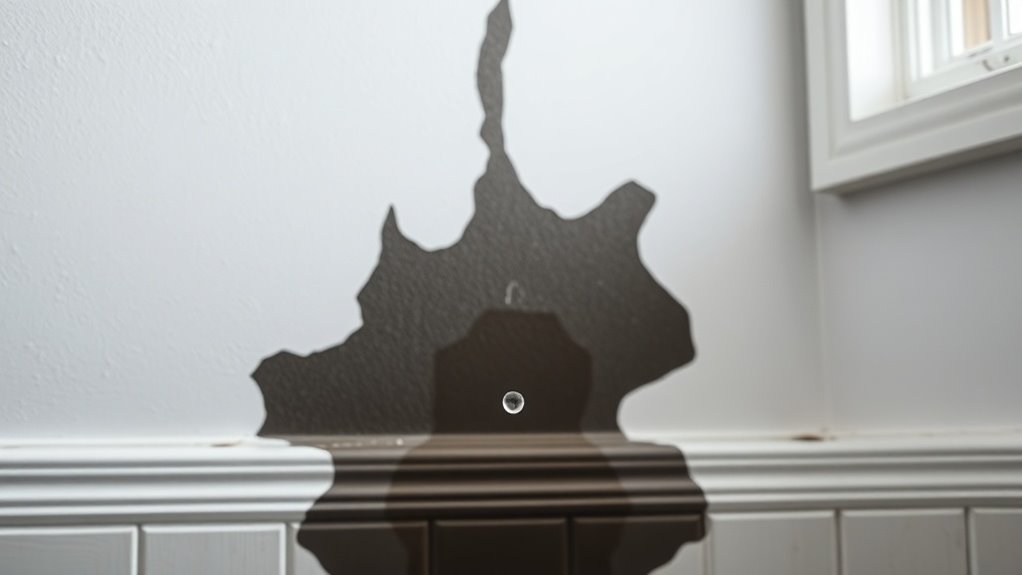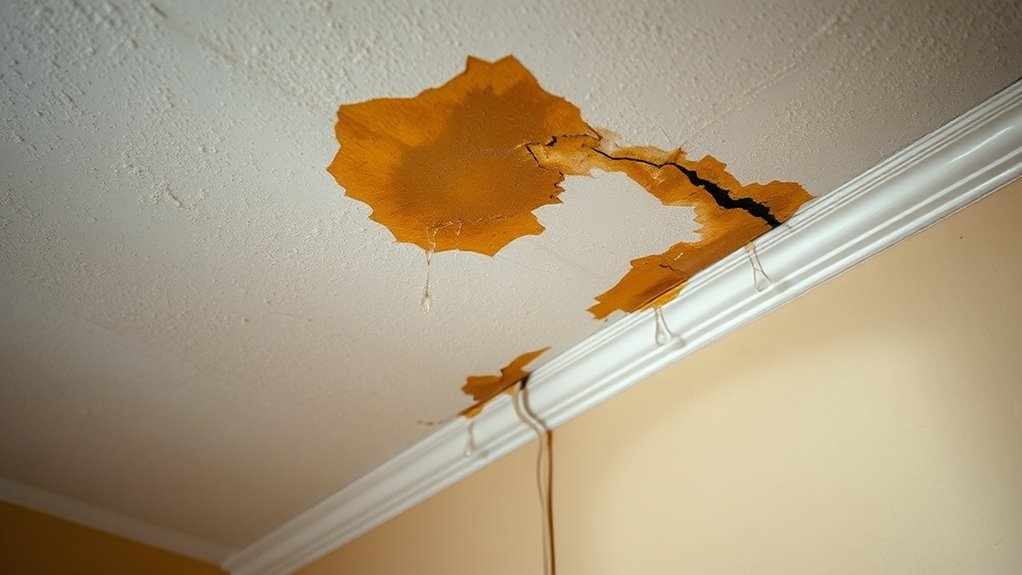Table of Contents
Hidden plumbing leaks cost homeowners hundreds annually, with a single dripping faucet wasting up to 20 gallons daily. We often miss the warning signs—mysterious water bill spikes, water stains, musty odors, reduced pressure, and unusual sounds like running water when fixtures aren’t in use. Beyond financial impact, these silent culprits cause structural damage, mold growth, potential insurance claim denials, drywall deterioration, warped flooring, foundation cracks, and increased humidity levels. Early detection through modern leak monitoring systems, ultrasonic leak detectors, moisture meters, thermal imaging cameras, and professional plumbing inspections can save you 10% on water bills and prevent catastrophic damage. The real impact might surprise you, especially when considering long-term effects on property value, indoor air quality, and water conservation efforts. Common leak sources include corroded pipes, damaged seals, pipe joints, water heaters, toilet flanges, shower pans, and irrigation systems.

While you mightn’t see them hiding behind walls or beneath floors, undetected plumbing leaks are silently draining your wallet each month.
We’ve seen hidden leaks cause dramatic spikes of $100-$200 on monthly water bills—a financial shock most homeowners aren’t prepared for.
That innocent-looking dripping faucet? It’s wasting up to 20 gallons daily, potentially adding $1,200-$2,400 to your annual expenses.
Even more concerning, the average household loses 2,000-3,000 gallons yearly to water leaks you can’t easily detect.
Running toilets, corroded pipes, damaged water heaters, cracked foundations, compromised pipe joints, underground water line breaks, faulty water pressure regulators, deteriorating seals, worn-out fixtures, and other concealed plumbing issues create significant water waste that quickly translates to higher bills.
Warning Signs Your Home Has a Silent Plumbing Problem

Even the most vigilant homeowners can miss the subtle warning signs of hidden plumbing leaks until they’ve caused extensive damage.
We’ve seen countless cases where unexplained spikes in water bills—jumping $100-$200 monthly—were the first indicator of a serious plumbing issue.
Don’t ignore visual clues like water stains, bubbling paint, or discoloration on walls and ceilings. These telltale signs often reveal leaks lurking behind surfaces.
Musty odors and mold growth shouldn’t be dismissed either; they’re clear signals that moisture is accumulating where it shouldn’t be.
Pay attention to your home’s water pressure. Consistently low pressure in multiple locations may indicate leaks in your supply lines.
Remember, the average home loses 2,000-3,000 gallons yearly from unaddressed leaks—damage that’s entirely preventable if you recognize these warning signs early.
Listen for unusual sounds like dripping, gurgling, or running water when no fixtures are in use. These noises can indicate hidden pipe issues or toilet leaks.
Watch for slow-draining sinks or tubs, as clogs can lead to pipe damage over time.
Check for wet spots in your yard or unusually lush patches of grass, which may signal underground pipe leaks.
Inspect your water meter when all fixtures are off—if it’s still moving, you likely have a leak somewhere.
Look for foundation cracks or shifting, as water leaks can undermine your home’s structural integrity.
Monitor fixtures for corrosion or mineral deposits, signs of ongoing leakage.
Check your water heater for puddles or rust, indicating potential tank failure.

Although hidden plumbing leaks can occur anywhere in your home, certain areas are particularly vulnerable and deserve your immediate attention.
We’ve found that pipes behind walls, under sinks, around appliance connections, basement foundations, attic spaces, crawl spaces, outdoor irrigation systems, and slab foundations are prime spots where hidden water issues develop unnoticed.
Toilets are frequent offenders, with leaks often occurring in tanks, flush valves, wax rings, and floor seals. Your water meter can reveal these silent problems before they’re visible.
Don’t overlook water heaters, where connection leaks, pressure relief valves, and tank corrosion can cause significant damage to your home. Washing machines and HVAC systems frequently develop leaks in supply lines, drain hoses, condensate drains, refrigerant lines, and drain pans.
Experienced plumbers recommend regular inspections of these common culprits.
Monitoring your water usage, checking water pressure levels, examining pipe joints, inspecting fixture seals, and testing shutoff valves helps identify and
